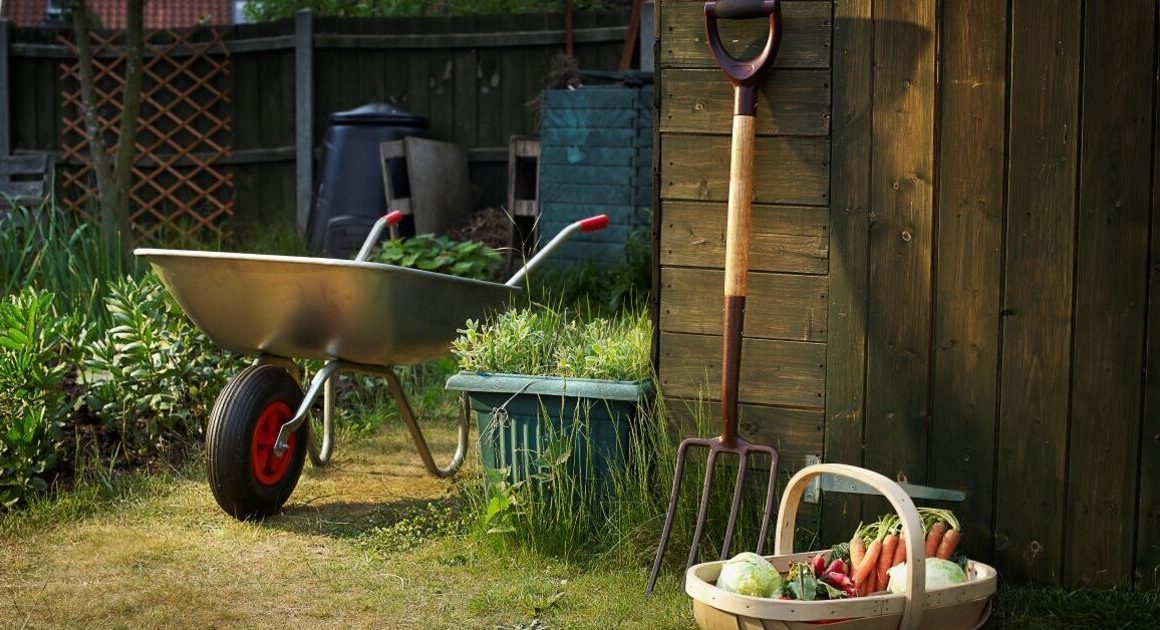It may not seem like there is a lot to do in the garden in January, but as the end of winter approaches, there are some gardening jobs that will give you a headstart for the warmer weather.
Lawns are usually dormant at this time of year which means the grass is resting to conserve energy to be stronger and healthier once the growing season begins.
Gardeners should not mow or fertilise lawns at this time of year as it can disrupt its natural cycle, encourage new growth that will struggle to survive in the cold weather and stress out the grass.
Instead, Jamie Shipley, a gardening expert and Managing Director of Hedges Direct, has shared three main lawn maintenance jobs that can be done in January to prepare for spring.
Lawncare jobs to do in January
Remove leaves, algae, moss, and debris from the garden
Keeping your lawn clean is important in winter as the excess moisture from frosty leaves can attract pests, fungal diseases and other unwanted plants.
Moss and algae can only survive in damp conditions and if alone will compete with your grass for nutrients and sunlight which will greatly weaken it.
Jamie said: “The upkeep of your garden in the earlier months will make it easier to maintain throughout the year. Rake and remove leaves and debris to keep things tidy and give your grass and greenery sunlight and fresh air.”
If you spot any brown spots on your lawn then it is likely moss. You can remove it by scarifying the lawn which is simply using a rake to comb through the grass to get rid of any decaying plant material.
Algae is also simple to remove through natural methods as you only need white vinegar that you put on chips as it is acidic enough to disrupt its growth.
Jamie added: “Built-up moss on lawns can be loosened and removed by scarification with a rake and algae can be cleaned with a 1:1 mixture of vinegar and water.”
Add worm castings to your lawn
Adding soil to attract earthworms to grass will loosen any compact soil which will allow more oxygen, sunlight and water to reach the grass roots.
Soil that has become hardened will not be able to absorb the materials and nutrients it needs to stay healthy and is the most common grass becomes brittle and yellow.
Jamie said: “Earthworms help create and maintain healthy garden soil by eating decaying plant material.
“The casts are left as a result of this worm activity and while they can be unsightly, they actually cause little harm and can add nutrients to your lawn.
“The casts should be brushed and broken up with a lawn rake in dry weather, before being spread out to incorporate their nutrients back into the lawn.”
Repair your lawn
One of the best things you can do for your lawn in January is simply nothing, if you avoid stepping on the grass it will help it stop being damaged while it is frozen.
Jamie said: “If your grass is frosty or under a layer of snow, avoid stepping on it. This can burn or scorch the grass and leave black or brown footsteps.”
Make sure to keep an eye on your grass though as it is easy for water to build up in wintertime, which can not only attract moss, disease and pests but can rots the roots to severely damage the lawn.
“After periods of heavy rain, waterlogged lawns may need to be aerated. Use a garden fork or mechanical aerator to spike your grass and fill the holes with a blend of sharp sand and loam.”
Aeration is the simple process of poking holes in your lawn using a pitchfork to encourage more air circulation and is one of the best ways to help your grass stay healthy so it is thick and lush come spring.












